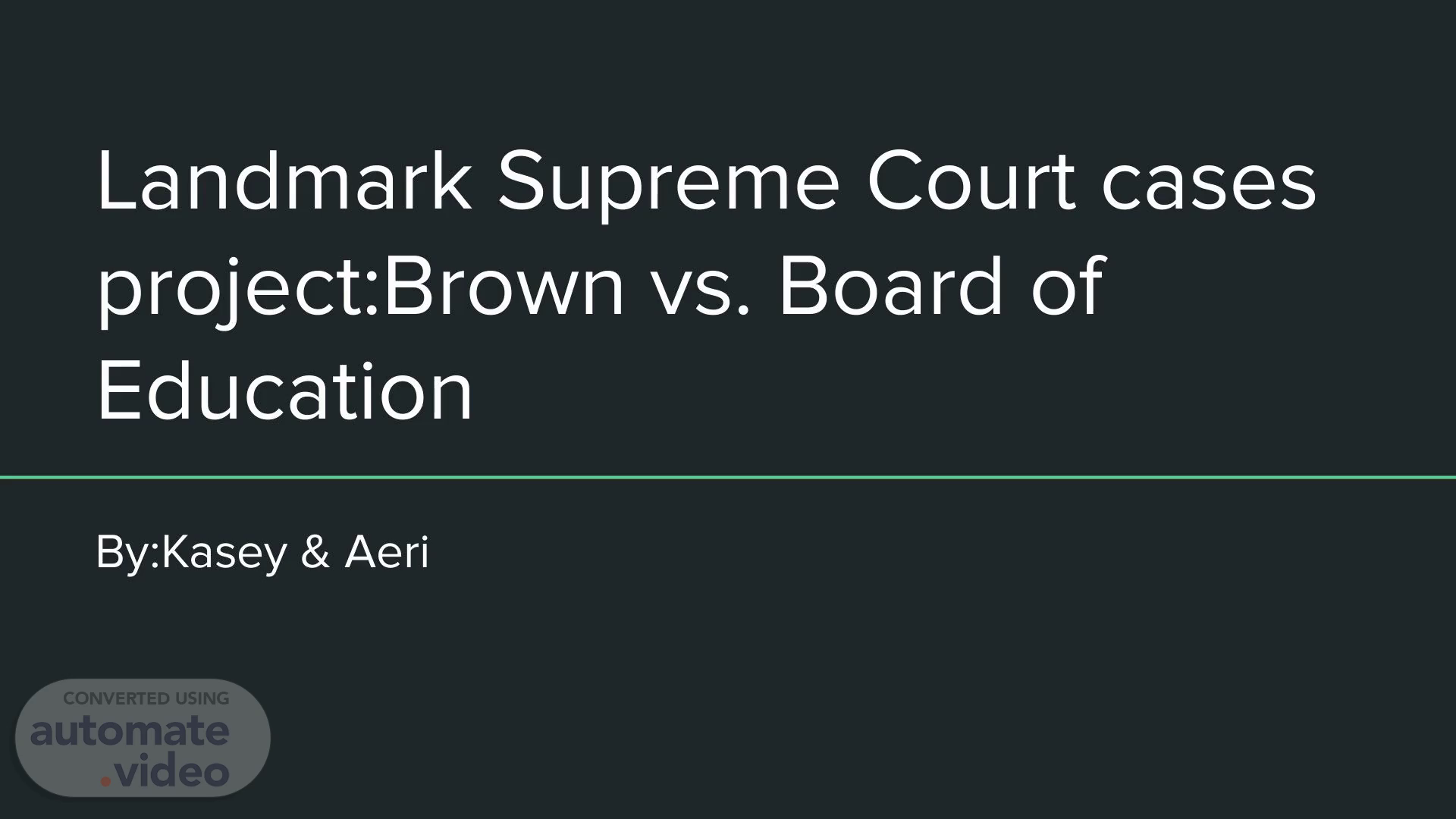
General presentation
Scene 1 (0s)
[Audio] Landmark Supreme Court cases project:Brown vs. Board of Education By:Kasey & Aeri.
Scene 2 (8s)
[Audio] How does a case get to SC?/What is a landmark decision? Parties who are not satisfied with the decision of a lower court must petition the U.S Supreme Court to hear their case.There are several steps a case has to go through to reach the Supreme Court. Trial at Lower Courts, Appeal to an Appellate Court, Petition for Writ of Certiorari, Granting Certiorari, Briefs and oral arguments and Supreme Court decision. A landmark decision refers to a legal ruling or verdict. These decisions often involve important issues, such as civil rights, constitutional interpretation, or major shifts in public policy. They can shape the direction of the legal system or have far-reaching consequences on society as a whole..
Scene 3 (57s)
[Audio] How does a Court Reach its Decision? Statues of the Supreme Court 1) Petition of Certiorari 2) Rule of Four 3) Briefing 4) Oral arguments 5) Conferences 6) Writing opinions.
Scene 4 (1m 19s)
[Audio] How does a Supreme Court ruling affect existing and future laws and procedures? It can change the interpretation of laws or declare them unconstitutional Key terms -Segregation -Racism -separate but equal.
Scene 5 (1m 34s)
[Audio] What were the issues that surrounded this case That separate schools for black and white was unequal and unfair. The brown family lived close to a school for their daughter but since it was whites only they had to travel hours just go to a all black school..
Scene 6 (1m 51s)
[Audio] The Outcome On May 17, 1954, U.S. Supreme Court Justice Earl Warren delivered the unanimous ruling in the landmark civil rights case Brown v. Board of Education of Topeka, Kansas, That segregation of public schools was a violation of the 14th amendment and was therefore unconstitutional..